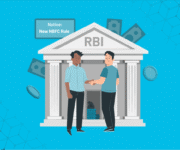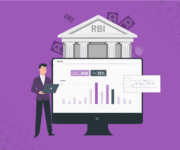Buy Now Pay Later (BNPL) is now becoming quite popular in the B2B space. Statista estimates that the global market for business payments is $125 trillion.
B2B BNPL added a new twist to the old concept of net payment terms. And today, more and more businesses are using it to purchase everything from office supplies to accounting services.
While this financial model paves the way for greater profitability and lesser risk, it is twisting trade finance rules. So let’s take a closer look.
Trade Finance with B2B Buy Now, Pay Later
B2B BNPL is a type of lending that allows businesses to buy goods and services for which they can pay later. Initially created for the retail space, BNPL is transforming how finance is done in the B2B sector; let’s see how.
1. Transforming the Credit Approval Process
While most industries have experienced digital transformation, the credit approval process in B2B is largely outdated.
The process is manual, which makes it time-consuming.
Often, it takes weeks to collect the necessary information for completing a cheque. If the process is too long, the sale may not even happen.
Compared to the traditional credit model, BNPL empowers firms to simplify and fasten their underwriting process to quickly close the sale.
2. Easy Access to Working Capital for SMEs
Personal savings and high-interest business loans are the traditional methods small and medium enterprises (SMEs) use to access working capital.
But, B2B BNPL offers them the option of availing working capital more conveniently and affordably. It has been set in motion due to specific trends such as increasing acceptability for credit at the transaction time. It is called embedded finance and is made possible by centralised data and API technologies such as GSTIN.
BNPL companies use embedded financing systems and work from the supplier platform. Hence, they act as another payment method for SMEs to obtain credit. Moreover, they connect multiple supplies, which helps in growth.
SMEs can use it to finance their business operations and pay later through EMIs. Moreover, they can save money as BNPL companies charge lesser interest rates.
3. Disrupting the Credit Card Model
According to a report, the global BNPL sector is expected to exceed $1 trillion. B2B Buy Now Pay Later poses a challenge to the inundated credit industry and removes painful points for businesses such as high-interest rates, lengthy credit approval process, etc.
Sellers get the money now for services or products they sell. Also, it removes the risk of nonpayment as the liability is shifted back to the company providing the credit instead of the seller.
It’s also beneficial for consumers as they don’t have to pay at once and can spread the payment over several days or weeks.
4. Enables Quicker and Convenient Borrowing
Compared to term loans, BNPL allows quicker and faster borrowing. Also, unlike credit cards, BNPL has lower interest rates, and the terms are easy to understand for the general public.
For example, term loans fulfil one-time monetary requirements. However, the application process is lengthy and filled with several roadblocks.
5. Makes B2B E-commerce Payments Seamless
Customer experience matters not just in the B2C sector but also in the B2B sector.
The seamless payment process in B2B e-commerce businesses is one such factor which can make or break a sale as payments are frequent with larger order volumes. B2B BNPL provides a smooth checkout experience for the buyers.
6. Making Lending Cost-Effective for SMEs
SMEs require financing to run their business operations, and a common way of acquiring it is through traditional lending models. But, these models are quite expensive as they charge high-interest rates.
Also, businesses have to incur hefty penalties in case of missed payments. Credit cards charge interest rates as high as 48% for late payments.
But, B2B BNPL is paving the way for a cost-effective financing solution as it charges low-interest rates from businesses. Moreover, it charges a nominal fee in case of late payments, with interest rates as less as 0 to 24%.
There are no extra costs such as GST, annual maintenance fee or cash advance in the BNPL model.
In terms of the lending procedure, BNPL has lower eligibility criteria than other models, which means a variety of businesses can adopt this scheme.
What Does the Future for B2B BNPL Look Like?
Although BNPL is in the development stage, it holds a lot of potential as it can help accelerate business growth by reducing friction in B2B payments.
In a conversation with Economic Times, Deepak Jain (Co-Founder of FlexiLoans) shared his opinion about the bright future for BNPL in B2B.
He said, ”We see the B2B BNPL market in two segments – online and offline. While the growth in online B2B commerce will be a strong driver for online B2B BNPL, under the offline B2B BNPL model, we anticipate that 12,000+ strong distributors and 300,000+ wholesaler networks will provide a strong network effect for the proliferation of the product.”
He added, “In addition, many other initiatives by the government, such as GST e-invoicing, Account Aggregator etc., will also provide fantastic rails for B2B transactions and hence credit.”
Particularly, small and medium enterprises can benefit from it as it can improve accessibility to working capital, which will drive profitability.
If you are a small business owner who wants a hassle-free lending lifecycle, use Finezza. We can help you process KYC documents faster, analyse lending risks, manage your credit applications, and streamline the overall lending procedure.
Get in touch with us today for your business financing needs!




Leave a Reply